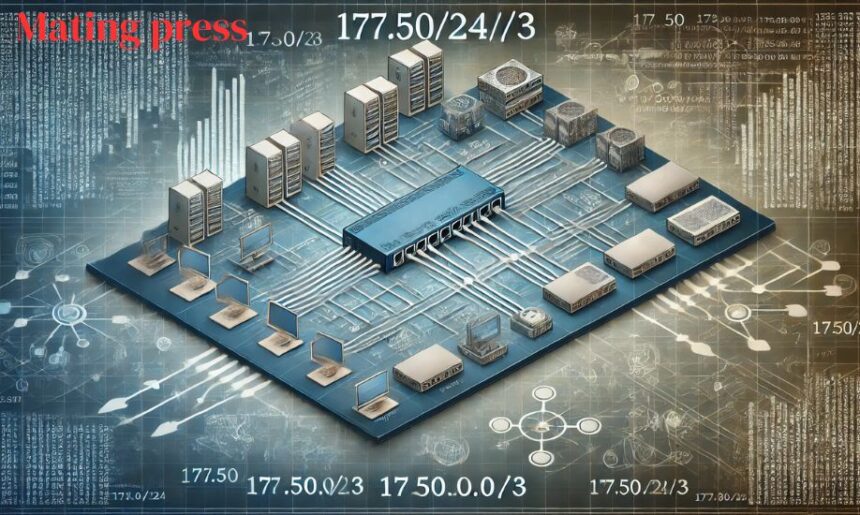In the world of technology and networking, complex terminologies can sometimes feel overwhelming. One such term that pops up frequently is 177.50/24/3. To the uninitiated, it might just seem like a random string of numbers, but it holds significant value in various technological domains, including networking, data management, and even business strategies. This article aims to break down 177.50/24/3 for you, explaining it in simple terms while exploring its practical applications.
Whether you’re a networking enthusiast or a business professional, understanding 177.50/24/3 can offer valuable insights. Let’s dive into what this term means and how it plays a pivotal role in different fields.
What Does 177.50/24/3 Mean?
At its core, 177.50/24/3 represents an IP address combined with a subnet mask and a network segment or supernet. It’s a part of the technical lingo used in IP networking, especially when discussing subnetting and IP address management.
- 177.50: This is the network address, which identifies a specific portion of the internet or a local area network (LAN). Think of it as the street name in a city that helps you identify a specific region or area.
- /24: This part is the subnet mask. The subnet mask determines how much of the IP address is used for the network portion and how much is left for identifying devices within that network. In /24, the first 24 bits are reserved for the network, which allows the remaining 8 bits to identify individual devices. This gives you 256 possible addresses (from 177.50.0.0 to 177.50.0.255).
- /3: This could represent a network segment or a supernet. A supernet is essentially a group of subnets combined into a larger network. This is useful for managing larger networks more efficiently, especially in large corporations or ISPs (Internet Service Providers).
The Importance of 177.50/24/3 in Networking
For professionals managing large-scale networks, the 177.50/24/3 configuration is more than just a set of numbers. It represents a method of efficient network organization and IP address allocation. Here’s why it matters:
- Network Organization: When handling large amounts of data and multiple devices, segmenting a network into manageable parts is crucial. 177.50/24/3 allows network administrators to organize devices, manage traffic, and prevent network overload.
- Efficient IP Addressing: By using subnet masks like /24, administrators can divide IP addresses more effectively. This minimizes IP wastage and ensures that each device gets a unique address without overlap or conflict.
- Enhanced Security: Network segmentation using 177.50/24/3 can enhance security by isolating different parts of a network. Unauthorized users cannot easily access sensitive information if different departments or regions have their own segmented networks.
How 177.50/24/3 Helps with Scalability
In any growing organization, scalability is key. Networks need to grow and expand without running into bottlenecks or IP shortages. 177.50/24/3 plays a critical role in ensuring that networks can scale smoothly. Here’s how:
- Expanding IP Address Ranges: With a /24 subnet, you get 256 possible IP addresses. For smaller departments or teams, this is more than enough. However, as the organization grows, supernetting allows administrators to combine multiple subnets (like 177.50.0.0/24 and 177.51.0.0/24) to create larger address pools.
- Dynamic Network Segmentation: Using the /3 supernet option allows businesses to manage network expansion dynamically. For instance, a large company can assign specific subnets to different departments and easily reallocate IPs as the organization expands.
Practical Applications of 177.50/24/3 in Real-World Networks
Let’s break down how 177.50/24/3 might work in a real-world setting, especially for a mid-sized or large organization:
Example: Office Network Configuration
Consider a company that has just moved into a new office building. They need to set up a network that connects multiple departments like Sales, HR, IT, and Engineering. Instead of assigning IP addresses randomly, they can use 177.50/24/3 to create organized and segmented subnets.
- Sales Department: Assigned the 177.50.0.0/25 range, giving them 126 usable IP addresses. This allows each computer, printer, and device in the Sales department to have a unique IP.
- HR Department: Assigned the 177.50.0.128/25 range, providing another 126 IP addresses.
- IT Support: Assigned 177.50.1.0/24, with 254 usable IP addresses, since they likely have more devices to manage.
By structuring the network in this way, the company can effectively manage traffic, enhance security, and make future expansions smoother.
177.50/24/3 in Data Management
While 177.50/24/3 is primarily known for networking, it also has implications in data management. Companies that handle large datasets or file systems can use 177.50/24/3 as part of their file naming conventions and backup strategies.
- File System Organization: Using 177.50/24/3 as a basis for naming files helps keep things systematic and easier to manage. For example, departments can have their own folders within the larger network space, much like they would in a subnetted network.
- Data Compression and Backup: The sequence 177.50/24/3 can also be used to determine optimal backup frequencies and compression ratios, ensuring that data storage is efficient and not overloaded. This helps reduce costs and improve retrieval speeds.
How 177.50/24/3 Translates to Business Strategies
Interestingly, 177.50/24/3 also finds applications outside of tech, particularly in business strategy. Dynamic pricing models and risk management algorithms have incorporated this sequence to optimize performance.
- Dynamic Pricing Models: Businesses, especially in e-commerce or ride-sharing industries, use data sequences like 177.50/24/3 to adjust prices in real-time based on demand, segment their markets more efficiently, and ultimately improve profit margins.
- Financial Planning and Risk Management: Financial analysts have adopted 177.50/24/3 for better risk assessment and portfolio management. The sequence helps balance risk and return, making financial forecasting more precise.
Conclusion: Why 177.50/24/3 Matters
To sum up, 177.50/24/3 is more than just a sequence of numbers—it’s a powerful tool used across multiple industries. Whether you’re a network administrator designing a complex network or a business professional looking to optimize your strategies, understanding 177.50/24/3 can give you a competitive edge.
By incorporating this into your network setup, data management, or financial strategy, you ensure efficiency, scalability, and enhanced security. For businesses, this can translate to smoother operations, higher profitability, and a better user experience.
At Mating Press, we believe in harnessing the power of technology to improve systems and strategies, and 177.50/24/3 is a prime example of how technical know-how can be applied across diverse fields. As your business or network grows, consider how 177.50/24/3 can help optimize and expand your operations.
Incorporating 177.50/24/3 into your infrastructure could be the key to unlocking greater efficiency and scalability in the future. So the next time you encounter this notation, remember—it’s not just about numbers, but about smart, scalable strategies for success.





